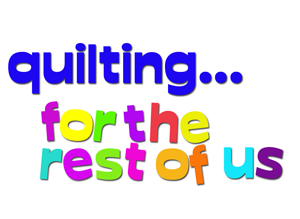 It's that time of year again!
It's that time of year again!
Join us for the
Boxing Day Sew In
Wednesday, December 26th.
THIS GIVEAWAY IS NOW CLOSED
Our family has a tradition of having a "Pajama Day" the day after Christmas. The change in the tradition is that where I used to spend the day on the floor playing with Legos or whatever the toy of the year was with my kidlings, now I spend the day in my sewing room recuperating with fabric while my grown children are doing whatever college kids do.
In honor of my friends from other places of the world for whom the day after Christmas is a venerable tradition named Boxing Day, my Pajama Day has become the Boxing Day Sew-In.
So why don't put on your jammies and slippers, and join me? We'll be chatting away on Twitter through the day (I'm @sandyquiltz if you're not already connected with me there).
In honor of yet another day of giving, I'm holding a give-away here on my blog. You can enter beginning as soon as this blog goes live at one minute past midnight on December 26th, until 11:59 p.m. Almost a full 24 hours to take your chances!
The one lucky winner will win two things--count 'em: Two!
I own a copy of this documentary and found it extremely thought-provoking, as well as a wonderful celebration of quilting, quilting communities, and the artistic impulse that anyone can relate to regardless of their skin color. I highly recommend it and hope whoever wins it will enjoy it as thoroughly as I did1
The second item in my giveaway is, honestly, helping me clean out my stash for the new year! I have far too many 2 1/2" strips kicking around. So whoever wins this giveaway will also receive a grab-bag of 50 (fifty) 2 1/2" strips from my stash. The picture is just a conglomeration from the stash--your grab-bag may or may not include strips pictured. Trust me--I won't just send you the ones I don't like. :-) I'll just close my eyes and grab 50, I'll make sure they're all full WOF and cut straight, and they're yours. You'll be helping me out immensely, and hopefully you'll be able to use them in some wonderful project soon!
To enter this giveaway, all you have to do is leave a comment here saying what you think you'd use a 2 1/2" strip for. You can be as creative as you want--it doesn't necessarily just have to be in a quilt!
Don't forget, you must have your email address included in your comment or accessible on your profile, or I won't be able to include you in the giveaway.
Have a wonderful Pajama Day-slash-Boxing Day. Don't forget to check out any other giveaways that are linked to this post!
THIS GIVEAWAY IS NOW CLOSED
